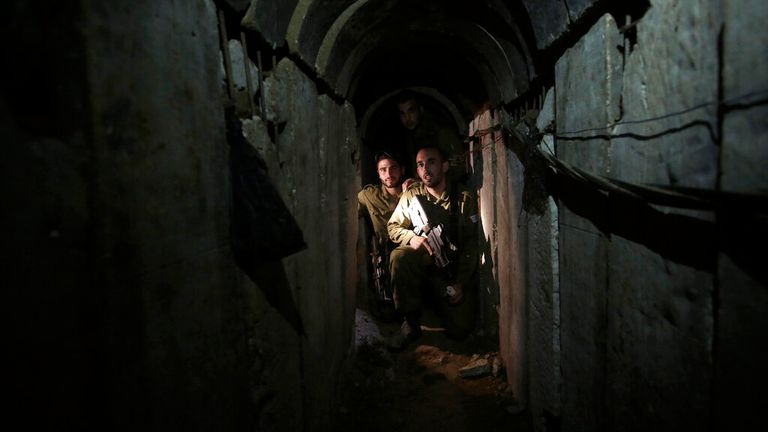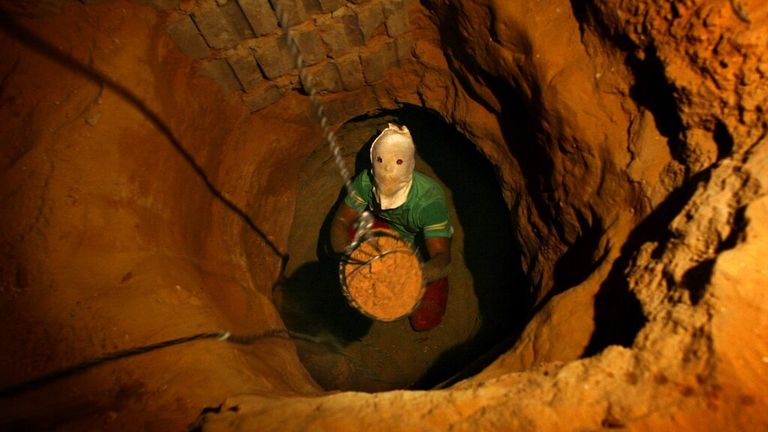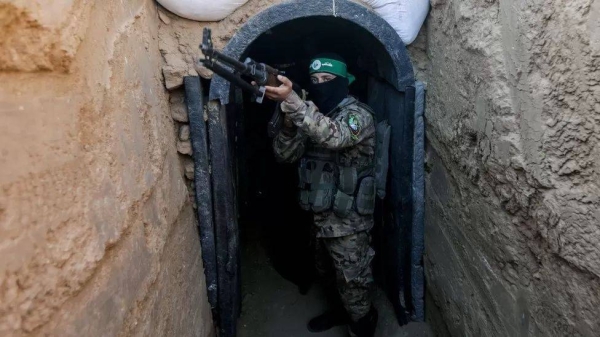Unveiling Hamas’ Elusive Subterranean Labyrinth: The Shadowy World of Gaza’s Tunnels
In the tumultuous landscape of the Middle East, the conflict between Israel and Hamas in the Gaza Strip has been characterized by numerous facets of tension and confrontation. Amidst this turmoil, a covert network of underground tunnels has emerged as a critical focal point. These clandestine passages, often shrouded in secrecy, have become a subject of extensive speculation and intrigue.
While Israel claims to have destroyed over 100 kilometers of these tunnels in 2021, Hamas leader Yahya Sinwar asserts that the Gaza tunnel network stretches an astonishing 500 kilometers, with only 5% of it reportedly eradicated. What lies beneath the surface, and how do these tunnels function? This exposé delves into the world of Hamas’ subterranean labyrinth, revealing a complex infrastructure that goes far beyond mere secrecy.
The Hidden Subterranean Network: A Closer Look
Hamas, a Palestinian militant organization that has controlled the Gaza Strip since 2007, has employed underground tunnels as a strategic means to navigate the confines of this densely populated region. These tunnels serve a multifaceted purpose, enabling the movement of people, weapons, and goods, and providing shelter to Hamas leaders.
These subterranean passages are ingeniously designed, featuring electricity, lighting, and even rail tracks to facilitate transportation of supplies. These tunnels are not rudimentary, muddy passageways, but rather sophisticated networks with multiple chambers, supporting a range of activities, from storage to military operations.
Yahya Sinwar’s Bold Claim
Hamas leader Yahya Sinwar made headlines in 2021 when he claimed that the tunnel network in Gaza extended an astounding 500 kilometers, with only a small fraction destroyed by Israeli military actions. While some skepticism surrounds these figures, they underscore the gravity of the situation and the scale of the tunnel system that Hamas has established.
Sinwar’s statement suggests a level of depth and intricacy that goes beyond the estimates provided by Israeli authorities. It also points to the resilience and determination of Hamas in maintaining this covert infrastructure.

A Network of Deception and Survival
Hamas’ tunnel network is not only an elaborate means of offense and defense but also a testament to the organization’s adaptability and survival tactics. These tunnels have been used to smuggle weapons, including rockets and mortars, from Egypt into Gaza. They have also served as hiding places for Hamas leaders, shielding them from targeted airstrikes.
The tunnels have become an integral part of Gaza’s identity, with some tunnels being so well-constructed that they are virtually invisible from the surface. In many cases, they are hidden beneath homes, schools, and other civilian structures, making them challenging to locate and destroy without causing extensive collateral damage.

The Gaza Siege: A Catalyst for Tunnels
The development of this subterranean infrastructure can be traced back to the Gaza blockade, which has been in place since 2007. The blockade, imposed by Israel and Egypt, restricts the movement of goods and people in and out of Gaza. In response, Hamas turned to tunnels as a means of bypassing the blockade and ensuring the flow of essential supplies and weapons.
These tunnels have, to some extent, alleviated the hardships caused by the blockade for Gaza’s population. While their primary purpose is military and clandestine, they also serve as a lifeline for basic necessities like food, medicine, and fuel. This dual role makes them a complex and controversial element of the Gaza Strip.
The Destructive Pursuit of Israel
Israel’s efforts to locate and destroy these tunnels have been relentless. The Israeli Defense Forces (IDF) have conducted numerous operations, with the most notable being “Operation Protective Edge” in 2014 and subsequent operations, specifically targeting these underground passages.
The primary methods for tunnel detection and destruction include intelligence gathering, advanced technology, and ground incursions. Israel employs a combination of technologies, including ground-penetrating radar, seismic sensors, and drones to identify tunnel locations. Once identified, the IDF may conduct ground operations to neutralize these threats.
While these efforts have seen some success, the intricacy of the tunnel network, coupled with the use of civilian infrastructure to conceal them, makes their complete eradication a formidable challenge. Furthermore, these military actions often result in civilian casualties and destruction, fueling international criticism.
The Human Toll: Collateral Damage and Deteriorating Living Conditions
As the cat-and-mouse game between Israel and Hamas unfolds beneath the surface, the people of Gaza have borne the brunt of the conflict. Israeli strikes aimed at destroying tunnels have frequently led to civilian casualties and extensive damage to civilian infrastructure.
The destruction of homes and schools, in particular, has exacerbated the already dire living conditions in Gaza. The people of Gaza, who already grapple with limited access to clean water, electricity, and medical care, are caught in the crossfire of this underground war. The situation highlights the ethical dilemmas that arise when combating a hidden, yet vital, military infrastructure.

The Broader Geopolitical Implications
The existence of Hamas’ tunnel network has far-reaching geopolitical ramifications. It serves as a constant source of tension between Israel and Hamas, further complicating any prospects for a peaceful resolution to the Israeli-Palestinian conflict. The cycle of tunnel discovery and destruction, often followed by rocket attacks and military responses, perpetuates a state of instability in the region.
Moreover, the existence of these tunnels has a significant impact on regional dynamics, involving not only Israel but also Egypt, which shares a border with Gaza. Egypt has taken steps to combat the smuggling of goods and weapons through these tunnels, further emphasizing the complex web of interests and conflicts in the region.
Conclusion: The Ongoing Saga of Gaza’s Subterranean World
The enigmatic realm of Hamas’ subterranean tunnels beneath the Gaza Strip continues to be a subject of intrigue and controversy. While the precise extent of this clandestine network remains a matter of debate, its impact on the people of Gaza and the broader geopolitics of the region is undeniable.
The tunnels are emblematic of the complex challenges faced by both Israelis and Palestinians in their quest for peace and stability. As these hidden passages weave beneath the surface, the prospects for a peaceful resolution to the Israeli-Palestinian conflict seem ever more elusive, entangled in the shadows of Hamas’ labyrinthine infrastructure. The world watches, with bated breath, for what the future may hold for this subterranean saga.



